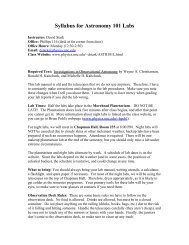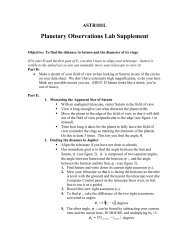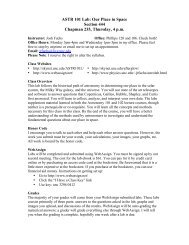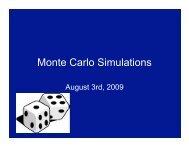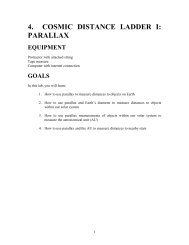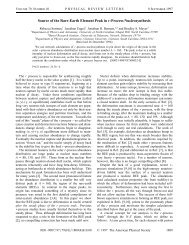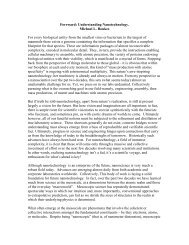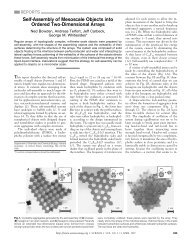3. THE GALILEAN REVOLUTION: EARTH'S PLACE IN THE SOLAR ...
3. THE GALILEAN REVOLUTION: EARTH'S PLACE IN THE SOLAR ...
3. THE GALILEAN REVOLUTION: EARTH'S PLACE IN THE SOLAR ...
You also want an ePaper? Increase the reach of your titles
YUMPU automatically turns print PDFs into web optimized ePapers that Google loves.
The center of Venus’s epicycle is always on a line between Earth and the sun.<br />
Consequently, Venus never wanders too far from the sun in the sky, which is what is<br />
observed:<br />
The geocentric model of the universe makes specific predications about Venus’s phases:<br />
(1) Venus’s phase is new or very close to new when it is closest to Earth and<br />
consequently appears largest; (2) It transitions to crescent as it recedes from Earth and<br />
consequently appears smaller; (3) It transitions to new or very close to new again when it<br />
is farthest from Earth and consequently appears smallest; (4) It transitions to crescent<br />
again when it is approaching Earth and consequently appears larger; and (5) It transitions<br />
to new or very close to new again when it is closest to Earth and consequently appears<br />
largest.<br />
These phase and angular diameter transitions correspond to a curve in the following plot.<br />
The curve is thick because different versions of the geocentric model of the universe<br />
make slightly different predictions:<br />
6




